Legislation represents the culmination of years of planning, environmental remediation, and collaboration between local, state, and federal leaders
Washington, D.C. – U.S. Senator John Curtis (R-UT) and Representative Dr. Mike Kennedy (R-UT)—along with Senator Mike Lee (R-UT) and Representatives Burgess Owens (R-UT), Celeste Maloy (R-UT), and Blake Moore (R-UT)—today introduced the Moab UMTRA Project Transition Act, legislation to authorize the transfer of the Moab Uranium Mill Tailings Remedial Action (UMTRA) site to Grand County upon the completion of cleanup and remediation. The proposed transfer will allow the community to chart the long-term future of the site once it is deemed safe for reuse by the Department of Energy and other regulatory agencies.
“The Moab UMTRA site has undergone extensive remediation over two decades, and it’s time to prepare for what comes next,” said Senator Curtis. “The strength of this bill lies in the consensus behind it. It reflects years of cooperative effort among local leaders, the community, and federal agencies, all working toward a shared goal: restoring and returning this land to the people of Grand County.”
“This bill will give Grand County and the City of Moab the tools they need to transform the site of the former toxic ‘pile’ of radioactive waste the federal government left behind into a thriving community center. I am proud to facilitate this effort and ensure that the City of Moab and Grand County receive the cleanup they deserve,” said Representative Kennedy.
Local officials and stakeholders in Utah have expressed widespread support for the legislation.
“The City of Moab appreciates the work of our congressional delegation as the House and Senate consider the Moab UMTRA Project Transition Act of 2025. As the gateway to our community the completion of this project and local control of future plans for this site will surely be a showcase for generations to come,” said Joette Langianese, Mayor of Moab. “We are also grateful for the 25 years of bipartisan congressional support that will result in removing 16 million tons of uranium mill tailings away from the Colorado River, where it posed a threat to 40 million downstream water users in multiple states.”
Mayor Langianese sent Senator Curtis a letter of support, commending the progress which was enabled by broad collaboration and federal support. The full text of the letter is available here.
“Grand County proudly supports the Moab UMTRA Project Transition Act of 2025 and thanks Senator Curtis and Representative Kennedy for championing this critical effort. Removing the legacy uranium tailings from the banks of the Colorado River is vital to protecting our water and the health of our community. As we enter the final phase, we’re excited to partner with the City of Moab to transform the former Atlas Mill site into something that truly benefits both residents and visitors,” said Bill Winfield, Grand County Commission Chair.
Members of the Grand County Commission, led by Chair Bill Winfield, also sent Senator Curtis a letter of support, calling the legislation “vital for the future of Grand County and its residents.” The full text of the letter is available here.
“The Moab Chamber of Commerce sees this project as important for our local economy. With the cleanup nearing completion, the opportunity to revitalize the former Atlas Mill site opens the door for thoughtful redevelopment of the area. By transforming this space into a community asset, we’re strengthening the long-term vitality of our local economy. We appreciate the forward-thinking leadership and are excited about what it means for Moab’s future,” said the Moab Chamber of Commerce.
Background:
The Moab UMTRA site, located along the Colorado River near Arches National Park, was once home to a uranium milling operation that left behind 16 million tons of radioactive tailings. Following decades of concern over public health and environmental risk, Congress authorized cleanup through the Department of Energy’s Environmental Management program.
Remediation began in earnest in the early 2000s, with tailings transported by rail to a disposal site near Crescent Junction. Since then, the project has become one of the most significant environmental cleanups in the country, with ongoing work to ensure groundwater protection, air quality compliance, and safe reuse of the land.
Throughout his time in the House of Representatives, Senator Curtis worked closely with Moab and Grand County leaders to secure federal funding for the program and accelerate its progress. His advocacy contributed to increased appropriations that have kept the project on pace and prepared it for eventual transition.
With the cleanup nearing completion, community leaders have engaged in long-term visioning for the future of the site. Potential uses include recreational development, public open space, economic redevelopment, and environmental preservation—ideas that reflect Moab’s outdoor heritage and the community’s shared priorities.
The full text of the bill can be found here.
Additional Reading:
Breaking: New bill would put Moab uranium site under local control (Moab Sun News)
